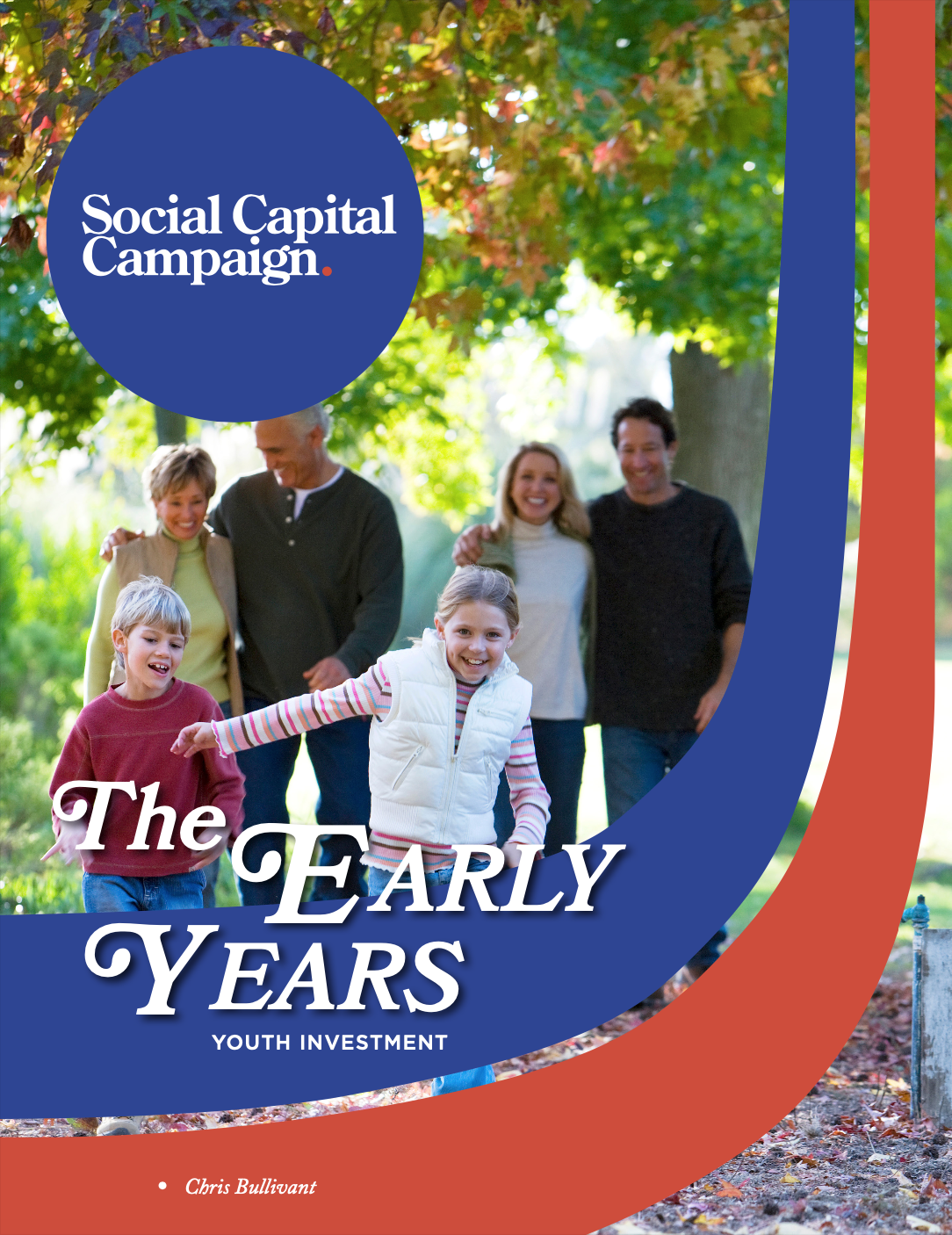“The Early Years - Youth Investment”
“The Early Years — Youth Investment.”
Introduction
Social capital—the rich network of relationships that surround an individual—is a significant determining factor on life outcomes such as educational attainment, quality of professional and personal relationships, overall health, and happiness.
The Social Capital Campaign reports have identified a widening social capital gap based on socio-economic background. Social capital is easier to accumulate and pass on among the wealthy than it is for those on low income—who experience the worst impacts of family instability, family affordability, estrangement from work, and civil society collapse. Diminishing social capital among lower-income families means less social capital to pass on to children. This lack fuels an intergenerational transmission of poverty and/or dysfunction.
The most fundamental building block to an individual’s start in life is the nature and quality of the care-giving received in early childhood. This is the case for all children regardless of background. In particular, the quality of mother-child attachment in the first three years helps form a child’s social brain, establishing patterns for all future relationships.
This report considers attachment theory, as developed by Bowlby and then Ainsworth—a theory supported by international studies conducted in a variety of cultures and societies, including Latin America, and developments in neuroscience. This report considers attachment theory as the gold standard for understanding the science of healthy child development. It places an emphasis on the unique biological and psychosocial role of a mother in raising young children, especially in the first three years of life.
No country fully aligns public policy with the tenets of attachment theory. But many other countries are closer to accepting its value and incorporating it as a reality. Many developed countries design their public systems to support the formation of a strong and secure attachment in the earliest years of a child’s life—with policies such as paid parental leave, access to high quality child care, and affordable-to-free-of-charge healthcare for expectant/new mothers and their babies.
The United States by contrast has a highly variable set of practices and policies which inconsistently supports these early relationships between children and their parents. The result is divergent outcomes based on family resources. Those with means and job flexibility have greater opportunity to form secure attachment relationships; those without the means must navigate the lack of universal paid family leave policies, uncertain healthcare, inaccessible, low quality and expensive child care, and a culture hostile to mothers providing early years care. The lack of these supports strains the parent-child relationship and increases family stress.
This report touches on subjects of a sensitive nature. However, it provides a panoramic view of an area of behavioral science and considers its impact on public policy.
Part 1 outlines alarming societal ills as they relate to America’s adolescents and young adults around mental health, anxiety, self-harm, addiction, and bullying. Does attachment theory have any light to shed on the causes of these concerning trends?
Part 2 gives an overview of attachment theory and international studies that explore the benefits of secure attachment on life outcomes. Two further studies highlight the negative impacts associated with non-maternal child care, and heavy use of day care. Together, there is a case for recognizing the role of attachment and suggestions for further research. In light of these findings, it is important to note the following difficulties for achieving secure attachment in America: the unfavorable outlier status in federal policy as it relates to paid family leave, employment protections, and healthcare provision for women of reproductive age—in particular America’s high maternal mortality rates.
In Part 3, this report makes policy proposals and calls for further research and the mobilization of academics, practitioners, schools, the private sector, and parents to reconsider the value of attachment and the early years in American society.
Establishing a firm foundation of secure attachment during the early years is one of the greatest investments a family can provide for their child. It is also a benefit to society: early investment in the 0-3s yields a return in reduced economic burden on public funds in later years. There is a long way to go, but there is considerable room for American policy to focus on what truly matters: supporting families to give America’s children the best possible start in life.

